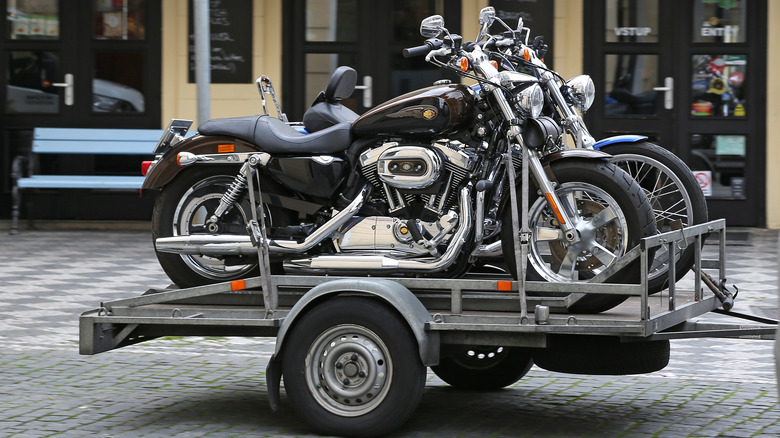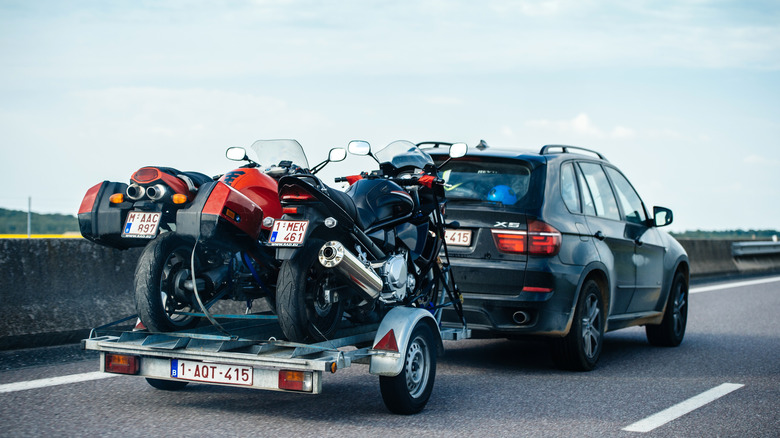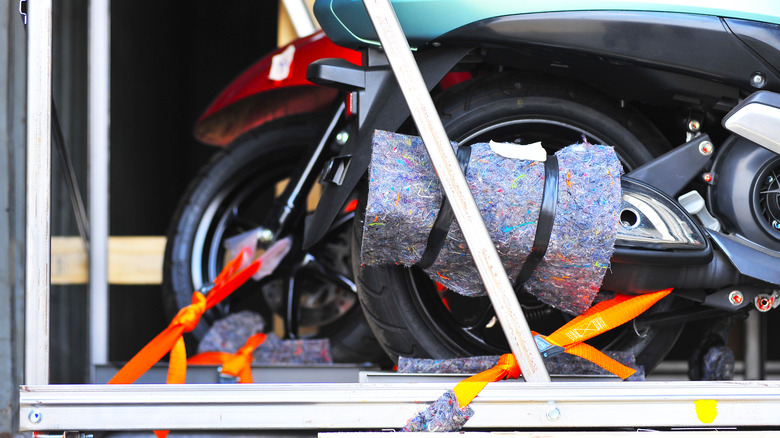How To Properly Load A Motorcycle Onto A Trailer
Like cars, motorcycles are for riding, but there are instances when loading your bike on a trailer is a better option. It could be due to a sudden breakdown, an unexpected purchase, a destination ride, or heading to the track. However, loading a motorcycle onto a trailer is not as easy as it looks, although it doesn't take much to do it right. For starters, motorcycle trailers come in various shapes and forms, but the most critical aspects to consider are the trailer load capacity and the tie-down features.
If you get both right, you can load any motorcycle on any trailer without a hitch (pun intended). Still, it helps to know a few tips and tricks to get you and your bike moving in no time. We prefer dual-axle trailers with a load capacity of 2,500+ pounds, but a standard front-wheel or stand-up motorcycle trailer will do the job just fine.
How to do it right: Loading a motorcycle on a trailer
Before lowering the ramp and loading your precious bike on a trailer, there are a few things to check. First, ensure that the parking brake on the tow vehicle is engaged, and double-check that the coupler and safety chains of the trailer are secure. The next step is to prepare the trailer by securing ratchet straps on the tie-down points of the trailer, preferably on all four sides. Securing your bike tightly in an X pattern with the ratchet straps is the best way to prevent the motorcycle from moving or tipping over while in transit.
Now comes the fun part: loading the bike on the trailer. First, lower the ramp gate carefully until it reaches the ground. Next, push the bike onto the trailer (preferably with a helper friend) and guide it until the front wheel is between the wheel chock. If the trailer doesn't have a wheel chock, use a standalone one.
We strongly advise resisting the urge to ride your bike onto the ramp for this part, partly to prevent you from becoming a viral YouTube sensation. But if you need to do so, do it slowly in first gear, and it'll be better if a friend helps you and the bike climb the ramp. Moreover, leaving the bike in first gear after loading is better to prevent it from rolling if the straps turn loose.
Secure the motorcycle
After loading the bike, all that's left is to secure it with the ratchet straps. Of course, the ideal ratchet points will depend on the make and brand of the motorcycle, so check the owner's manual to be sure. We recommend securing the front of the bike on the left and right side of the fork, making sure not to compress the suspension too much while ratcheting it tight.
Meanwhile, the ratchet straps in the rear should wrap around a specific part of the frame or swing arm. While you're at it, double-check that the straps are not pressing or severing any brake lines or electrical wiring. Finally, protecting the bike with a cover is strongly recommended to shield it from excess sun, wind, rain, dust, or snow exposure. It's typically better to tie down the cover on the bike rather than on the trailer to prevent it from flapping around.
All that's left to do is keep your speed in check when towing, ensuring not to exceed 55 mph to prevent trailer sway. With these tips, you can pull any motorcycle trailer from point A to point B without scratching or damaging the bike.


